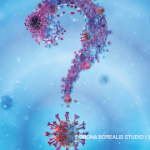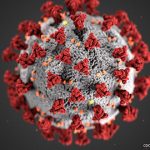Dr. Throsby said the main focus—neutralization of two cytokines at once—has a challenge: differentiating themselves from just using two different monoclonal antibodies in combination.
“The main driver there may be cost and convenience,” he said. “But there are much more opportunities to be explored in this field.”
Efficacy
A separate talk addressed another bispecific antibody, COVA322, which is being developed by Switzerland-based Covagen. It binds simultaneously to TNF and IL‑17A. COVA322 is made by fusing two fynomers, small binding proteins, to an anti-TNF antibody, said Mathias Locher, PhD, Covagen’s chief development officer.
The developers are encouraged by studies showing, in a collagen-induced arthritis mouse model, that a combination of anti-TNF and anti-IL17 treatment has been shown to produce better efficacy and long-lasting remission, compared with either TNF or IL-17 blockade alone.1
Both of COVA322’s fynomers bind to IL-17A—and one of them also binds to TNF. Dr. Locher said the avidity gain strengthens the connection to IL-17A homodimer, while other IL-17 family members are not neutralized.
In pre-clinical studies in mice and monkeys, the drug showed no adverse cardiovascular, respiratory or central nervous system effects. The immunogenicity profile was similar to that of adalimumab.
It is now being studied in a psoriasis trial of 39 patients to evaluate safety and biological activity.
The developers say it is designed for superior efficacy compared with existing treatments in inflammatory disease, most of which produce similar responses.
“There is a huge area of opportunity to increase the activity of new treatments,” Dr. Locher said.
Inflammatory Mediator Inhibitor
Another drug—presented by Erik Hack, MD, PhD, head of the infection and immunity research program at University Medical Center at Utrecht—targets both IL-4 and IL-10. In vitro, the “synerkine,” as researchers are calling it, has been found to be a potent inhibitor of the release of inflammatory mediators by cells. It also inhibits spontaneous release of inflammatory mediators by the joint tissue of RA and osteoarthritis patients and has been seen to have a cartilage-protecting effect. In a mouse model, it has been found to reverse pain sensitivity.
These traits make the drug particularly attractive as a potential osteoarthritis treatment, Dr. Hack said. According to unpublished data that he presented, the drug seems to reduce pain in a canine model of the disease.
“We think,” he said, “that this molecule has potential as an anti-inflammatory and analgesic therapy.”
Thomas R. Collins is a freelance medical writer based in Florida.
Reference
- Alzabin S, Abraham SM, Taher TE, et al. Incomplete response of inflammatory arthritis to TNFα blockade is associated with the Th17 pathway. Ann Rheum Dis. 2012 Oct;71(10):1741–1748.

